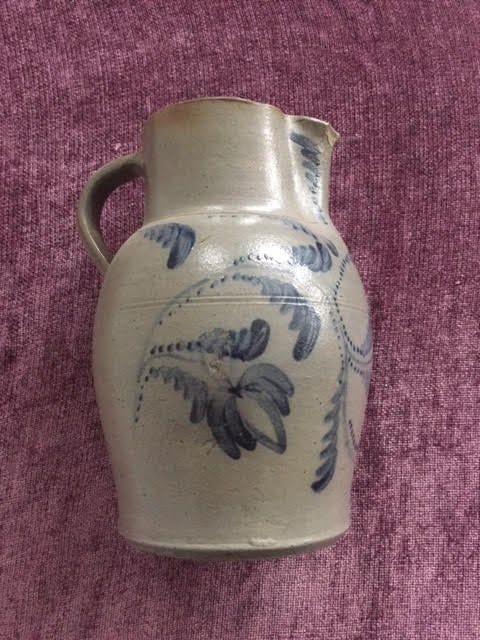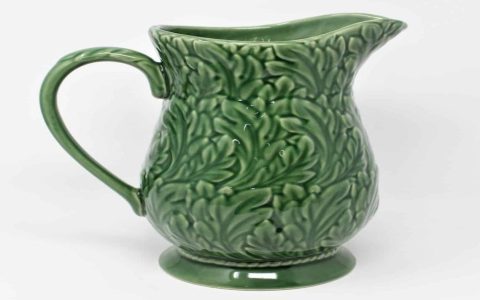Antique stoneware pitchers represent utilitarian vessels crafted from dense, vitrified clay fired at high temperatures (1200°C+), typically produced between the 18th and early 20th centuries. Their non-porous nature made them ideal for storing liquids before modern refrigeration.
Historical Context
Predominantly manufactured in America and Europe, stoneware pitchers evolved regionally:
- American salt-glazed examples (1820-1880) feature coarse clay with blue cobalt oxide decorations.
- English mochaware (1790-1850) displays distinctive slip-trailed "earthworm" patterns.
- German Westerwald (17th-19th century) pitchers exhibit gray clay with cobalt and manganese geometric designs.
Authentication Indicators
- Glaze characteristics: Salt-glazing creates orange-peel texture; ash-glazing shows subtle drips.
- Base examination: Unglazed "foot rings" reveal clay color. Circular grinding marks indicate pre-1920 wheel throwing.
- Pitting/wear: Authentic age shows mild glaze attrition on high points, not uniform scrubbing.
Valuation Parameters
Market value hinges on:

- Maker marks: Stamped names like "Norwalk" or "Fulper" increase worth significantly.
- Decor complexity: Freehand floral designs command 3-5x premiums over simple bands.
- Structural integrity: Hairline cracks reduce value by 30-50%; replaced handles render pieces decorative-only.
Preservation Protocols
- Clean solely with distilled water; avoid abrasives that remove patina.
- Store in stable humidity (45-55%) to prevent crazing or salt efflorescence.
- Never use for modern beverages - lead content in historical glazes may leach.












